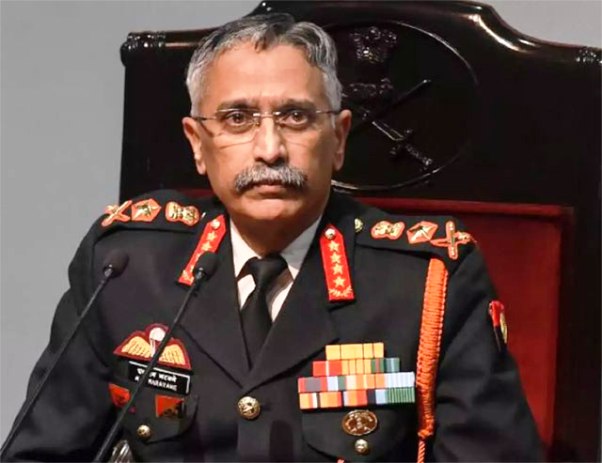Disruptive technologies and new domains of warfare are forcing the militaries across the globe to re-structure, and reorganize in an effort to fight future wars. While highlighting the impact of disruptive technologies, the Indian Army Chief General MM Naravane stated that the current modernization drive was focused on upgrading existing weapon systems and platforms. He was speaking at a two-day seminar on the “Impact of Disruptive Technologies on Our Fighting Philosophy in Future Conflicts” as part of the Defence and Strategy Seminar 2020 at Army War College, Mhow.
He also talked about a national mission for identifying the needs and congruence of products into military applications, which must form part of the modernization strategy of the armed forces.
ALSO READ Future Military Technologies : Gen MM Naravane on Changing Characteristics of Warfare
The seminar was the first virtual initiative of its kind at such a large scale where disruptive technologies like Robotics, Big Data Analytics, Cyber, and Small Satellite, 5G/6G, Cloud Computing, Artificial Intelligence (AI), Augmented Reality / Virtual Reality (AR / VR), Quantum Computing and cyber warfare were discussed. The virtual event was streamed across 54 locations with 82 outstations.
The panellist included military, technocrats, academician and speakers who discussed relevant themes and how to develop them in doctrines and formal papers. The keynote address was delivered by Lieutenant General Raj Shukla, GOC-in-C, ARTRAC.
There is an urgent need for the Indian Armed Forces to focus on the available disruptive technologies, especially those that have dual-use and are now being driven by innovations and commercial entities.
Why was the seminar important?
World over there is a technology tsunami underway and it has compelled the militaries to reorganise and re-structure to fight future wars.
According to the Indian Army, the discussion with experts gave an insight into the complex themes and was also a sounding board on strategic and doctrinal issues which are of critical importance.
What does the Indian Army need on urgent basis?
As has been reported earlier by Financial Express Online, if the Indian Army is going to be deployed in the Galwan Valley along the Line of Actual Control (LAC) there is urgent requirement for the Battlefield Management Systems (BMS); drones – both armed any unarmed; Future Ready Combat Vehicles (FRCV); Infantry Combat Vehicles including light Tanks among other platforms.
Importance of Indigenous BMS
There is an urgent need for the Indian Army to enhance its Net-Centric Operational (NCO) capabilities. This will help in inter-connecting the frontline combat soldier through modern Digital Network.
The programme which was shelved by the Ministry of Defence in 2017 due to shortage of funds needs to be revived as it will help in integrating the frontline troops of infantry battalions and armoured corps, and who can effectively handle various levels of combat information. This is useful for deploying armament effectively.
Each soldier has a digital identity and interconnected tactical communication network in BMS.
As reported earlier, the Indian Army had evolved the requirement of this system from a long term perspective. This was done especially in an effort to support Command & Control infrastructure for a large number of troops.
What was the status of the BMS before it was put on hold?
It had reached a level where two Development Agencies were chosen — Tata Power (Strategic Engineering Division) in partnership with L&T, Bharat Electronics and Rolta, India.
Indigenous Netcentric Operations Systems
The focus of the Chief of Defence Staff is to integrate the resources of the three services. However, this can be possible only through the interoperability of Network Centric Systems of the Army, Navy and the Indian Air Force.
The three services have independently developed their own indigenous NCO systems. “Re-appropriation of naval air assets in deserts etc. and similar measures on ad-hoc basis needs to be part of a holistic NCO vision. Most importantly there is a need to have the information flow through the BMS to the frontline Army resources,” explained an officer who wished to remain anonymous.


















